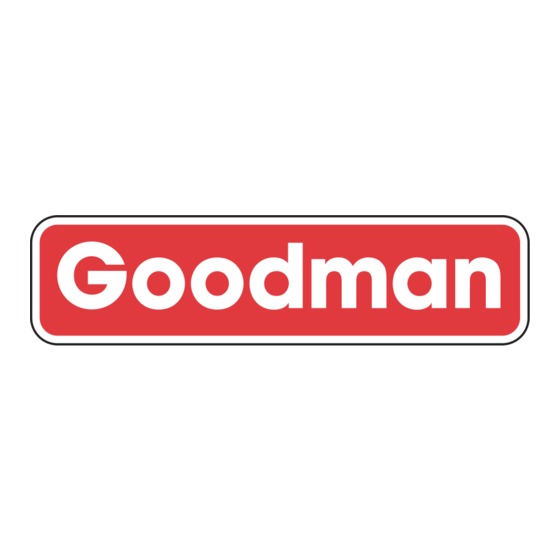Advertisement
CONDENSING AC UNIT
SINGLE / THREE PHASE AIR CONDITIONERS
INSTALLATION & SERVICE REFERENCE
NOTICE
THIS UNIT IS SHIPPED WITH A NITROGEN/HELIUM
HOLDING CHARGE ONLY. UNIT MUST BE EVACUATED
AND CHARGED PER INSTALLATION INSTRUCTIONS
WITH REFRIGERANT LISTED ON SERIAL RATING PLATE.
NOTICE
UNITS SHIPPED WITH A HOLDING CHARGE ARE
INTENDED FOR COMPONENT REPLACEMENT ONLY ON
EXISTING SYSTEMS, AND NOT INTENDED FOR USE IN
NEW SYSTEMS OR NEWLY CONSTRUCTED HOMES.
NOTICE
UNITS MUST ONLY BE USED AS REPLACEMENT
COMPONENTS FOR PRE-2010 INSTALLED SYSTEMS.
Models
GSC13018
GSC13024
GSC13030
GSC13036
GSC13042
GSC13048
GSC13060
‡ Approximate charge shown for 15' of 3/8" liquid line. System charge must be
adjusted per final charge adjustment (Page 7.)
Important Safety Instructions
The following symbols and labels are used throughout this
manual to indicate immediate or potential safety hazards. It
is the owner's and installer's responsibility to read and com-
ply with all safety information and instructions accompanying
these symbols. Failure to heed safety information increases
the risk of personal injury, property damage, and/or product
damage.
Nominal
‡
Charge
(oz.)
75
77
66
77
95
89
131
© 2010-2011 Goodman Manufacturing Company, L.P.
5151 San Felipe, Suite 500, Houston, TX 77056
www.goodmanmfg.com -or- www.amana-hac.com
P/N: IO-402E
Date: December 2011
SYSTEM SUPERHEAT
Outdoor
Dry Bulb
55
57
Temperature, °F
60
10
13
65
8
11
70
5
8
75
----
----
80
----
----
85
----
----
90
----
----
95
----
----
100
----
----
105
----
----
110
----
----
115
----
----
Fixed Orifice
CAUTION
To prevent personal injury, carefully connect and disconnect
manifold gauge hoses. Escaping liquid refrigerant can cause
burns. Do not vent refrigerant into the atmosphere. Recover all
refrigerant during system repair and before final unit disposal.
1. Purge gauge lines. Connect service gauge manifold to
base-valve service ports. Run system at least 10 min-
utes to allow pressure to stabilize.
2. Temporarily install thermometer on suction (large) line
near suction line service valve with adequate contact and
insulate for best possible reading.
3. Refer to the superheat table provided for proper system
superheat. Add charge to lower superheat or recover
charge to raise superheat.
4. Disconnect manifold set, installation is complete.
Superheat Formula = Suct. Line Temp. - Sat. Suct. Temp.
HIGH VOLTAGE!
Disconnect ALL power before servicing.
Multiple power sources may be present.
Failure to do so may cause property damage,
personal injury or death.
Indoor Wet Bulb Temperature, °F
59
61
63
65
67
17
20
23
26
29
14
16
19
22
26
10
13
15
19
23
6
9
11
15
20
----
----
7
12
17
----
----
----
8
13
----
----
----
5
10
----
----
----
----
5
----
----
----
----
----
----
----
----
----
----
----
----
----
----
----
----
----
----
----
----
69
71
30
31
27
29
24
25
21
23
18
20
15
16
11
13
8
10
5
8
----
5
----
----
----
----
Advertisement
Table of Contents
















Need help?
Do you have a question about the GSC13018 and is the answer not in the manual?
Questions and answers